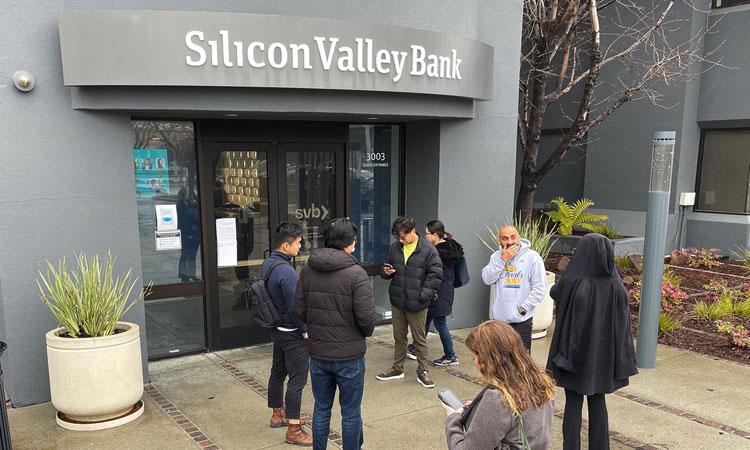Silicon Valley Bank, a major lender to technology firms, has become the largest bank to fail since the 2008 financial crisis. The bank's closure has put nearly $175 billion in customer deposits under the control of the Federal Deposit Insurance Corp. It has raised concerns about the stability of other banks and the potential impact on young start-ups who rely on such banks for funding. The situation highlights the importance of proper risk management and the potential risks associated with investing in bonds with high yields. Here's what we know about the situation so far.
1. Regulators took control of the bank on Friday, less than two days after the bank tried to convince clients not to withdraw their money due to concerns it was running low on cash. The California Department of Financial Protection and Innovation appointed the Federal Deposit Insurance Corp. as the receiver.
2. The FDIC created a new bank, the National Bank of Santa Clara, to hold the deposits and assets of the failed bank. According to the agency, the new entity will be operational by Monday morning and checks issued by the old bank will continue to clear.
3. Silicon Valley Bank, like other banks, invested most of its deposits in bonds with the hope of earning a return. However, the bank was caught out when the Federal Reserve raised interest rates to cool inflation last year. At the same time, funding for start-ups began to dry up, putting pressure on the bank's clients, who started to withdraw their money. To pay these requests, the bank was forced to sell off some of its investments when their value had declined. In a surprise disclosure on Wednesday, the bank announced it had lost nearly $2 billion.
4. The failure of Silicon Valley Bank has raised concerns about other banks, as bank runs can occur when customers or investors start to panic and withdraw their deposits. Shares of First Republic Bank and Signature Bank were down more than 20% on Friday, but shares of some of the largest banks, including JPMorgan, Wells Fargo, and Citigroup, edged higher on Friday after a slump on Thursday.
5. Silicon Valley Bank provided banking services to almost half of venture capital-backed technology and life-science firms, according to its website, as well as over 2,500 venture capital firms, including Lightspeed, Bain Capital, and Insight Partners. Some entrepreneurs whose funds are frozen at the bank are now turning to loans to make payroll.


















